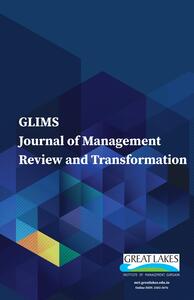
1JJT University, Jhunjhunu, Rajasthan, India
2Indian Institute of Management Bangalore (IIMB), Bengaluru, Karnataka, India
Artificial Intelligence (AI) is touching everyone’s lives in today’s world. The term ‘Artificial Intelligence’ was coined by John McCarthy in 1956 at the Dartmouth Conference. From its birth till now, AI has emerged as a diverse and flourishing research domain. This article explores the events leading to the birth of AI domain and its establishment (i.e., past), and traces the more recent achievements of AI and its current major themes (i.e., present). Based on these historical trajectories and novel influences, the article attempts to explore the future of AI. The future of AI domain is extremely promising with major possibilities including big data, cognitive science and artificial life.
Artificial intelligence, big data, expert systems, cognitive computing, artificial life
Brachman, R. (2004). Workshop on self-aware computer systems. http://www.formal.stanford.edu/jmc/www.selfawaresystems.org/.
Church, A. (1936). An unsolvable problem of elementary number theory. American Journal of Mathematics, 58(2), 345–363.
Crevier, D. (1993). AI: The tumultuous search for artificial intelligence. BasicBooks.
Davis, R., Buchanan, B., & Shortliffe, E. (1977). Production rules as a representation for a knowledge-based consultation program. Artificial Intelligence, 8(1), 15–45.
Franklin, S., & Graesser, A. (1997). Is it an agent, or just a program? A taxonomy for autonomous agent. In J. Muller, M. J. Wooldridge & N. R. Jennings (Eds.), Intelligent agents III: Agent theories, architectures, and languages (pp. 21–35). Springer.
Lindsay, R. K., Buchanan, B. G., Feigenbaum, E. A., & Lederberg, J. (1980). Applications of artificial intelligence for organic chemistry: The Dendral project. McGraw-Hill.
McCarthy, J., Minsky, M., Rochester, N., & Shannon, C. (1955, August 31). A proposal for the Dartmouth summer research project on artificial intelligence. http://www.formal.stanford.edu/jmc/history/dartmouth/dartmouth.html.
McClelland, J. L., Rumelhart, D. E., & PDP Research Group. (1986). Parallel distributed processing. Explorations in the microstructure of cognition (Vol. 2: Psychological and Biological Models). MIT Press.
McCorduck, P. (2004). Machines who think (2nd ed.). A. K. Peters Ltd.
McCulloch, W. S., & Pitts, W. (1943). A logical calculus of the ideas immanent in nervous activity. The Bulletin of Mathematical Biophysics, 5(4), 115–133.
McCune, W. (1997). Solution of the Robbins problem. Journal of Automated Reasoning, 19(3), 263–276.
McDermott, J. (1981). R1: The formative years. AI Magazine, 2(2), 21–21.
Minsky, M., & Papert, S. (1969). Perceptrons. MIT Press.
Newquist, H. P. (1994). The brain makers: Genius, ego, and greed in the quest for machines that think. Macmillan/SAMS.
Post, E. L. (1943). Formal reductions of the general combinatorial decision problem. American Journal of Mathematics, 65(2), 197–215.
Rosenblatt, F. (1958). The perceptron: A probabilistic model for information storage and organization in the brain. Psychological Review, 65(6), 386–408.
Rumelhart, D. E., McClelland, J. L., & the PDP Research Group. (1986). Parallel distributed processing. Explorations in the microstructure of cognition (Vol. 1: Foundations). MIT Press.
Russell, S. J., & Norvig, P. (2003). Artificial intelligence: A modern approach (2nd ed.). Prentice Hall.
Shannon, C. E. (1948). A mathematical theory of communication. Bell System Technical Journal, 27(3), 379–423.
Turing, A. M. (1936). On computable numbers, with an application to the Entscheidungs problem. Proceedings of the London Mathematical Society, 42(2), 230–265.
Turing, A. M. (1950). Computing machinery and intelligence. Mind, 59, 433–60.
Varela, F.J., Thompson, E., & Rosch, E. (1991). The embodied mind. MIT Press.
Wiener, N. (1948). Cybernetics: Or control and communication in the animal and the machine. MIT Press.
Winograd, T. (1972). Understanding natural language. Academic Press.